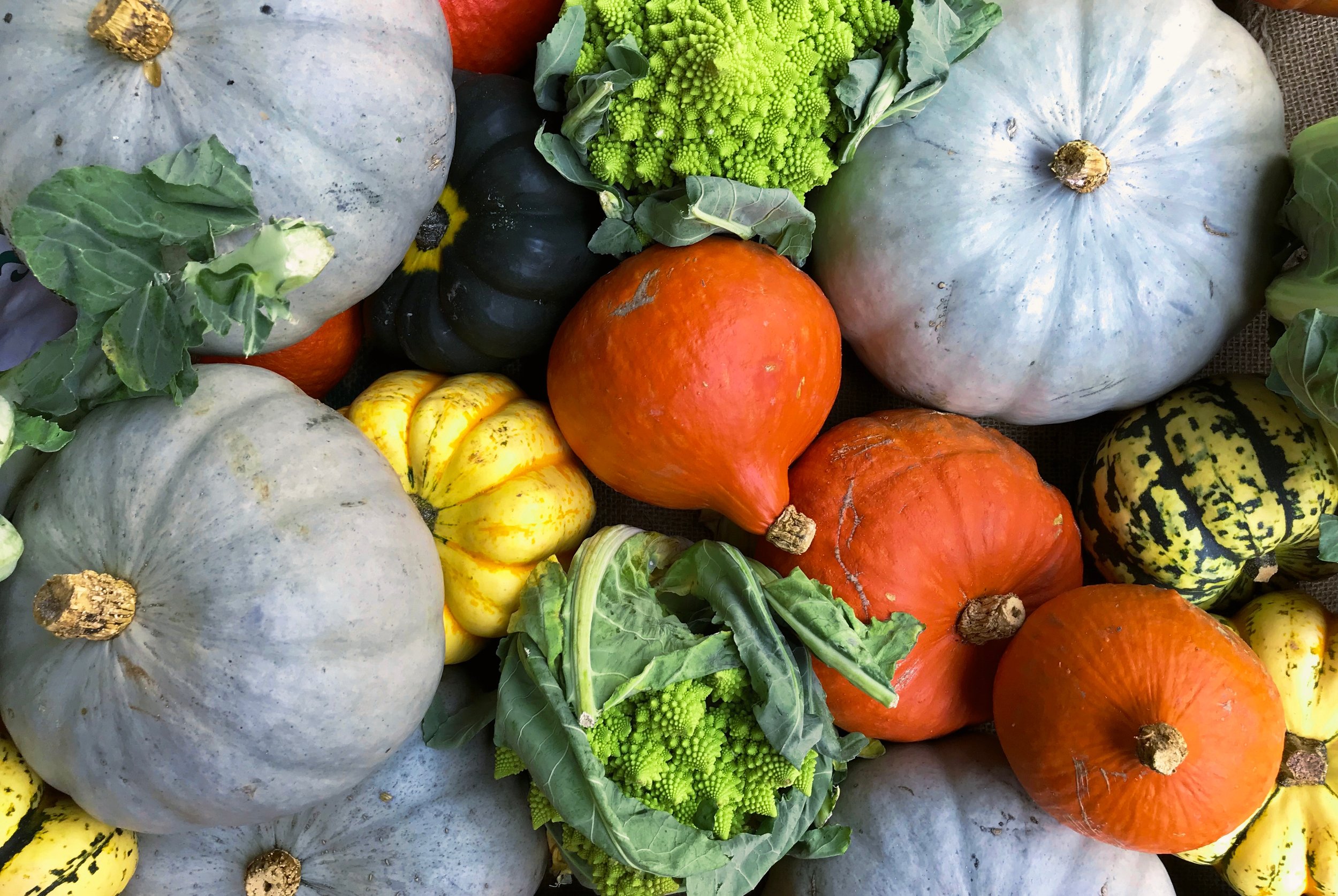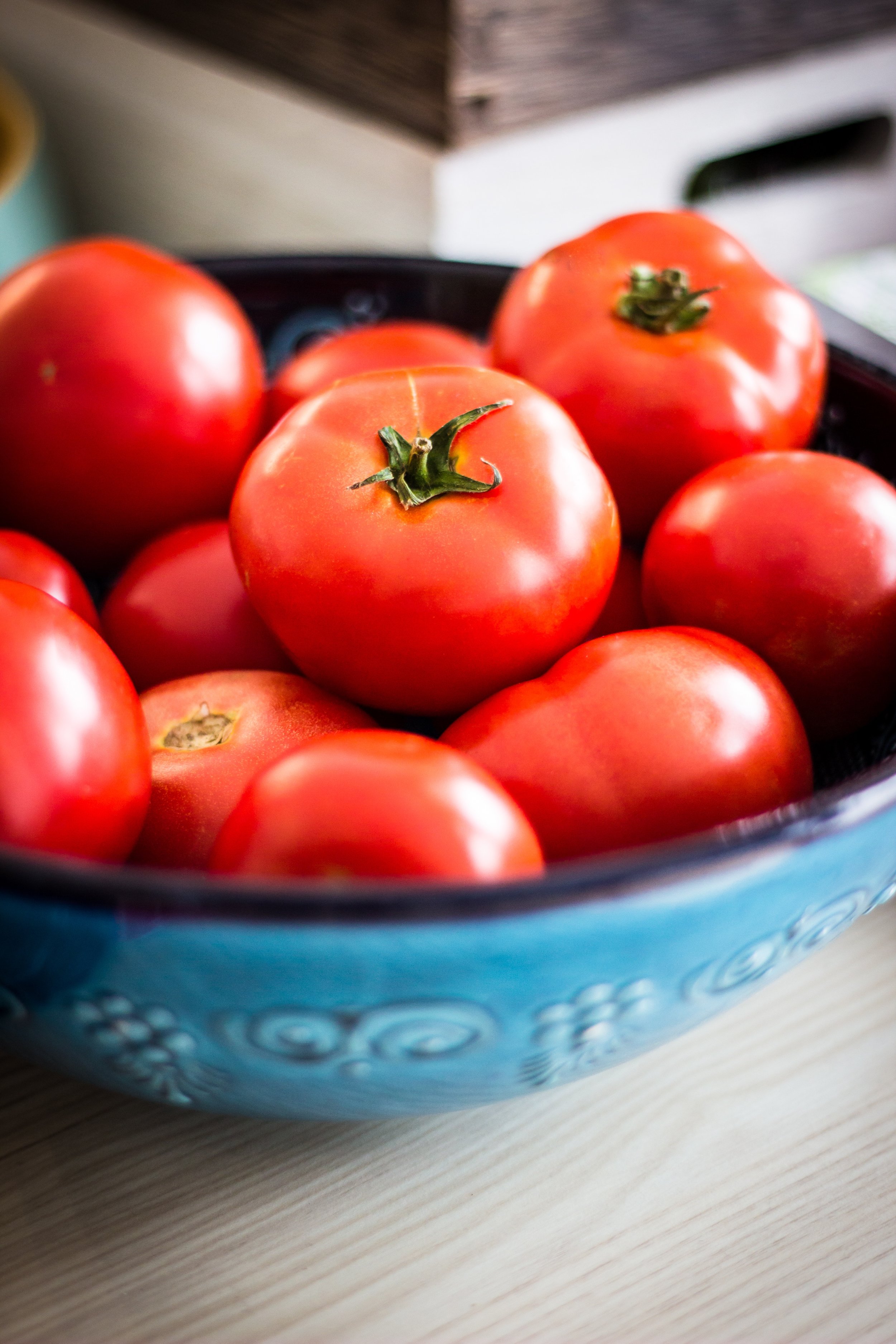
Photo by Blair Fraser on Unsplash
After the last posts you’ve cleaned out your kitchen and restocked your pantry with all the healthy essentials! But you want to get the most out of your money and make sure all those delicious goodies last as long as possible. (Missed those posts? Check them out here and here.)
In this post we will go through how to wash and store your produce as well as optimal storage for nuts, seeds, and other healthy fats.
A Quick Note on Organic versus Conventional
In terms of health benefits, there have been studies done that show organic produce tends to be more nutrient dense than conventional.
However, the nutrient content in produce can vary greatly based on where and how it is being grown, the nutrients available in the soil, and that doesn’t even take into account conventional versus organic.
While overall it is fair to say that buying organic is better for our bodies and the environment than conventional, sometimes it’s not possible either for accessibility or budget reasons. But there is a great way to decide what produce should get priority over others.
The Environmental Working Group out of the United States has just released their 2019 round-up of the most and least pesticide contaminated produce. Their “Clean Fifteen” is the least contaminated produce which you should be OK buying conventionally. The “Dirty Dozen” is the produce with the most pesticides that you should try to buy organic as much as possible. (1)
The 2019 “Dirty Dozen” is:
-
Strawberries
-
Spinach
-
Kale
-
Nectarines
-
Apples
-
Grapes
-
Peaches
-
Cherries
-
Pears
-
Tomatoes
-
Celery
-
Potatoes
And the 2019 “Clean Fifteen” is:
-
Avocados
-
Sweet corn
-
Pineapples
-
Frozen sweet peas
-
Onions
-
Papayas
-
Eggplants
-
Asparagus
-
Kiwis
-
Cabbages
-
Cauliflower
-
Cantaloupes
-
Broccoli
-
Mushrooms
-
Honeydew melons

Photo by NeONBRAND on Unsplash
Cleaning and Storing Fruits & Vegetables
Properly cleaning your fruits and veggies is so important – not just because of pesticides, but also due to the possibility of bacteria and food-borne illnesses. Pesticides can be found even in small amount on organic produce (not all pesticides are banned in organic farming). And bacterial contamination can occur in a variety of ways, like during the growing season by animals or contaminated soil or water, or by poor hygiene by the workers harvesting the produce. The food can also become contaminated from the many hands it passes through during processing, during your own food preparation, or improper storage. (2)
That all being said, it’s cleaning your produce is pretty straight forward and easy to incorporate into your meal prep!
General Storing & Cleaning for Produce (exceptions below):
Wash just before consuming in a large bowl of cool water with 1 teaspoon (5mL) of baking soda dissolved. Use your hands or a brush to ensure all dirt is removed from the produce. Rinse and pat dry.
Most fruit and vegetables can be stored in the fridge, ideally in the designated crisper drawer. However, some are OK in a cool, dry space that is well ventilated.
In a cool, dry spot:
-
Bananas
-
Pineapple
-
Potatoes
-
Onions
-
Garlic
-
Mushrooms
-
Eggplant (but use within a couple days after purchase)
-
Hard-skinned squash (like pumpkin, butternut, etc.)
In a cool, dry spot until ripe then move to fridge:
-
Tomatoes
-
Citrus
-
Avocados
-
Mangos
-
Plums
-
Peaches
-
Pears
-
Melons
Leafy Greens
Wash these before storing. Fill up the sink with cool water with a teaspoon (5mL) of baking soda. Add in the greens and submerge, mixing gently (did you know that you can “bruise” lettuce?).
Let soak for several minutes before turning into the basket of a salad spinner. Rinse gently before spinning. Be sure not to overfill the spinner otherwise the leaves will not dry properly. If you don’t have a spinner lay the leaves out over dry dishcloths and pat to dry.
Store in the fridge in a dry and clean plastic bag or container with one or two paper towels layered in between to soak up additional moisture.
Celery & Carrots
Can be washed & chopped before storage or just before eating. Wash following the general process.
If storing before washing, just place as is in the crisper drawer of the fridge.
If storing after washing, (peel carrots if desired), chop into sticks. Store upright in the fridge in a container filled halfway with water. Will last less time like this than if stored whole, unwashed (but much more convenient to grab and go as a snack!). Around 3-4 days in the fridge.
Berries
Store in the fridge and only wash just before use (otherwise they will go off quite quickly).
Rinse gently in cold water using a mesh strainer or colander. Pat dry.
Asparagus
Store in the fridge with the bottoms wrapped in a damp paper towel or standing upright in a glass of cold water.
Wash following the general process before consuming.
Mushrooms
Store in a cool, dry spot or the fridge and clean before use only.
Scrub gently using a mushroom brush or a slightly damp towel. Mushrooms easily absorb moisture so avoid using too much water in the cleaning process.
(3)(4)

Photo by Deniz Altindas on Unsplash
Storing Fats & Oils
-
Butter: smaller portions for use over the following few days can be stored at room temperature (covered or away from light), but the bulk of it should be refrigerated for the long term
-
Ghee: unopened jars can be stored in a cool, dark cupboard. Once opened they can last for around 3 months at room temperature (in a cupboard rather than out in the open), or up to a year in the fridge. You can easily store it in the fridge like butter, taking out smaller portions for the upcoming days or week.
-
Avocado & Olive oil: always be sure that it is in a dark glass or opaque bottle to protect from oxidization from light exposure. Store in a cool, dark cupboard.
-
Animal fats (like tallow, lard, duck fat, etc.): store in the fridge
-
Nut & seed oil: always be sure that they are stored in an opaque bottle and store in the fridge.
Storing Nuts & Seeds
-
Whole nuts & seeds:
-
Good: a closed, cool cupboard
-
Better: fridge
-
Best: freezer
-
-
Ground nuts & seeds:fridge or freezer
-
Nut & seed butters or oils: fridge
Nuts and seeds once they are out of their shell have a shelf life of maximum a few months at room temperature; due to their generally high share of polyunsaturated fats they can go rancid fairly easily.
Don’t store them out in the open, but rather in a closed, and ideally cool, cupboard. The best is to store them in the fridge or freezer which will help them last for up to a year or more!
Once the nuts or seeds have been ground, they absolutely should be stored in the fridge or freezer, and if you have butters or oils they should be kept in the fridge.
(1) https://www.ewg.org/foodnews/summary.php
(2) https://www.fda.gov/ForConsumers/ConsumerUpdates/ucm256215.htm
(3) https://foodrevolution.org/blog/how-to-wash-vegetables-fruits/
(4) http://www.halfyourplate.ca/fruits-and-veggies/store-fruits-veggies/

